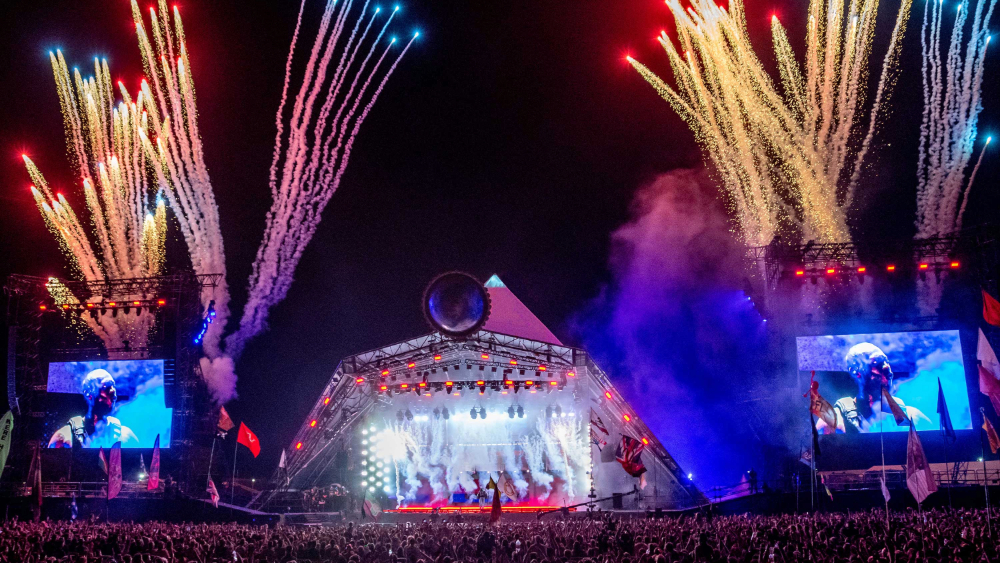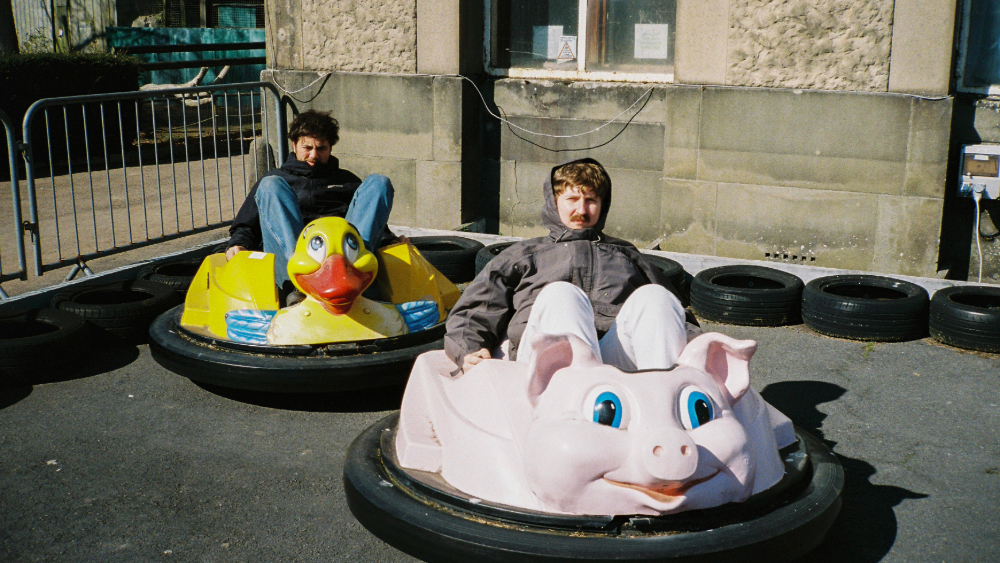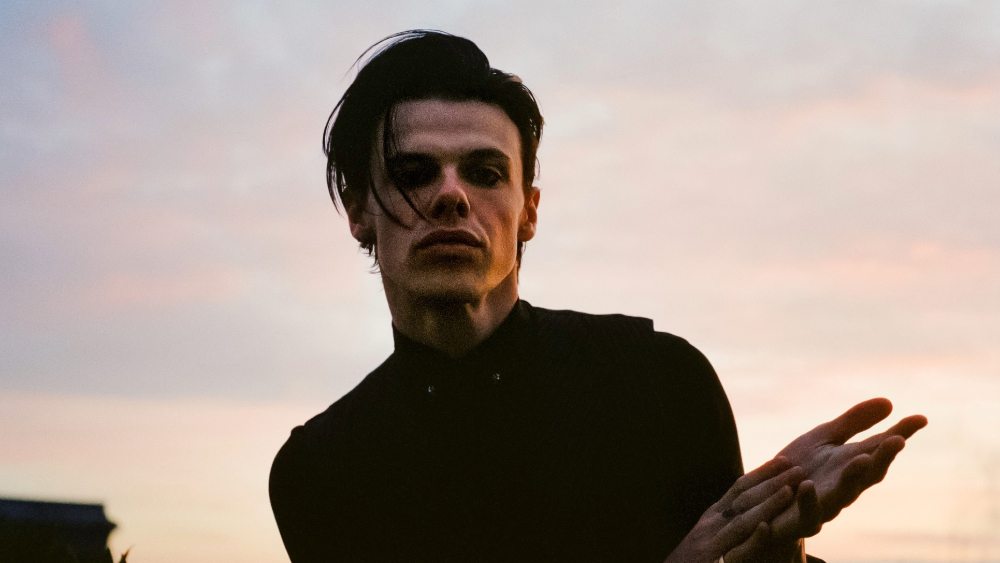Performing at Glastonbury can shape an entire career. For Nilüfer Yanya, stepping on the West Holts stage this year will mark more than just a return to Worthy Farm — it’s a tangible sign of how far she’s come as an artist.
‘There’s something so special about Glastonbury,’ Nilüfer excitedly tells M. ‘It’s really gratifying to be heading back and performing on a bigger stage this time.'
The London singer-songwriter is among thousands of music creators who will be hoping to seize their moment at this year’s Glastonbury. Given that the festival continues to deliver magical moments and career highlights in abundance, it’s no surprise that the so-called ‘Glastonbury effect’ remains alive and well.
Steve Symons, who currently serves as the artist booker for the West Holts stage, defines the effect thusly: ‘Put simply, it’s when an artist has their career boosted by a performance at the festival. The bounce initially comes from the live reaction from the crowd, but then it’s mainly [generated] from the global TV audience who are watching from home.’
Glastonbury’s wide-ranging appeal intensified in 1994 when Channel 4 became the first broadcaster to screen live sets from the festival, with their 4 Goes to Glastonbury coverage initially aiming to capture the explosion of the Britpop movement. With the BBC taking up the mantle in 1997, coverage of the festival has grown from strength to strength. Glastonbury 2023 was streamed a record-breaking 65m times on BBC iPlayer and BBC Sounds, while this year’s festival will see over 90 hours of performances being livestreamed across iPlayer.
It’s no wonder, then, that performing on one of Glastonbury’s main stages can be a boon for artists, with overnight surges in record sales and streaming figures being regularly reported following a televised Worthy Farm set. Last year’s festival saw Pyramid Stage headliners Dua Lipa and SZA enjoy a huge uplift in music sales, with all three of the former’s albums returning to the UK top 10 off the back of her headline performance.
‘West Holts is part of an ecosystem of over 100 stages at Glastonbury, and it’s great to see artists moving through them.’ - Steve Symons
It's not just the headline acts who benefit. PRS Foundation-funded soul singer Jalen Ngonda, whose West Holts set last year was televised, felt the impact first-hand. ‘It’s the most-viewed festival in the world, so it felt inevitable that being broadcast at Glastonbury would open doors for a lot of future opportunities,’ he reflects.
Ultimately though, Jalen tells M, the performer is still in charge of the performance whether the cameras are present or not. ‘It’s still down to you how the show goes — you have to take that moment and make the most of it,’ he says, adding that budding artists hoping to follow in his footsteps should be sure to concentrate primarily on their craft. ‘Let those outside things happen and seize them, but focus on yourself first,’ he adds. ‘Everything else is down to outside forces, so all you can do is focus on the gig.’
As Steve points out, the ‘Glastonbury effect’ is all-encompassing. ‘Things can spin off in the most bizarre ways that are hard to quantify,’ he says, citing the incredible response that legendary R&B, soul and funk band Kool & The Gang received after he booked them for the West Holts in 2011. ‘That was the first time they’d ever played a festival in their career. Eddie Van Halen saw the televised set and ended up booking them to be a support act on Van Halen’s US arena tour.'
As well as broadcast opportunities, Glastonbury also offers artists a pathway to move up to its bigger stages as their careers progress. ‘West Holts is part of an ecosystem of over 100 stages, and it’s great to see artists moving through them,’ Steve explains. ‘All of the bookers who work at Glastonbury share similar values and tastes in music. It’s certainly a system that prides itself on giving artists those opportunities, and it’s really important to us that artists can move on to bigger stages.
‘We’re always delighted to see artists take that next step,’ he continues. ‘Ezra Collective, who have already played twice for us, will be on a bigger stage this year. Little Simz first played West Holts back in 2016, right at the start of her career. She then played on the Park Stage before headlining West Holts, and then ended up on the Pyramid Stage last year. It’s been the same with the likes of Michael Kiwanuka, Lizzo, Janelle Monáe and many more. We absolutely love watching careers blossom in that way.’
Nilüfer, who first performed at Glastonbury in 2019 on the William’s Green stage, views her own progression up the festival line-up as a rewarding way of charting her development: ‘It’s exciting, because you’re not just going back and doing the same thing, you’re progressing. It’s a nice way to be able to look back on your journey and see how far you’ve come. It feels nice to come back and know that what you’ve worked on has paid off.’
As well as drawing world-class talent, Glastonbury continues to pride itself on championing new music. The festival’s annual Emerging Talent Competition generates significant interest and support, with the winner taking home a £5,000 Talent Development prize from PRS Foundation and securing a slot on one of the festival’s main stages. This year’s winners are Westside Cowboy, a Manchester-based four-piece who will now play on Woodsies’ Main Stage.
‘To be able to offer something really solid and give an opportunity to play at the festival is really exciting,’ Glastonbury boss Emily Eavis told NME in 2022. ‘The new music side to the festival is something I’m really passionate about and I love opening that up to the new talent.’
After finishing as runners-up in the 2023 Emerging Talent Competition, Prima Queen performed five times across different stages at that year’s Glastonbury. Having long wanted to enter the competition, vocalist Louise Macphail says their run to the final proved to be a game-changing opportunity for the band.
‘It was surreal just to play in front of Michael and Emily Eavis at the final,’ she tells M. ‘When you’re starting out it’s such a mystery as to how you’d even get in front of the people who book those iconic stages, so to have a process like this is invaluable for artists who are at the very start of their journey.’
Looking back on their Worthy Farm debut, Louise describes it as the best weekend of her life. ‘Our first set at the festival was at The Rabbit Hole and the tent was completely packed — we weren’t expecting it at all,’ she recalls. ‘It was so hot in there and everyone had been waiting for us. It felt like we’d kicked down a door. We ended up being interviewed by BBC 6 Music because we were one of the bands playing the most shows at the festival.’
'To have a process like Glastonbury's Emerging Talent Competition is invaluable for artists who are at the very start of their journey.' - Louise Macphail, Prima Queen
With such a vast and vibrant network of stages operating across the festival site, even those who perform away from Glastonbury’s main areas can make a name for themselves. Tom Hadfield, who has booked the likes of IDLES and Kneecap for the festival’s so-called ‘naughty corner’ Shangri-La, commends the festival’s continued ability to deliver those ‘I was there' moments that live long in the memory for artists and festivalgoers alike.
‘With those hidden corners of the festival and that dark underworld of the South East Corner [of the festival], you do get those iconic live moments,’ he says. ‘Obviously you get them everywhere else, but you can’t quite beat those live sets that happen in certain hours of the night in that corner of the festival. From an artist's point of view, it’s an opportunity to deliver one of those legendary moments that gets talked about around the site and then for years to come.’
Rising drum’n’bass songwriter and DJ A Little Sound, who will play on the Shangri-La main stage for the first time this year, is relishing the prospect of rising to this challenge: ‘It’s a different energy in Shangri- La — it feels like it could be a different part of Glastonbury altogether. The sun has gone down and you’ve watched the final sets on the main stages, so you head to the South East Corner and know it’s going to be a whole new experience.’
With the festival set to take a fallow year in 2026, this year feels like a real seize-the-moment opportunity for those artists who populate its stacked line-up. From career breakthrough moments to deservedly rising up the ranks, those who descend on Worthy Farm this weekend will hope to be worthy beneficiaries of the ‘Glastonbury effect’.
‘I think when an artist looks back over their career, there will be a handful of those gigs that stick out in the memory,’ Tom adds. ‘That’s what this festival is great for. Glastonbury feels like a unique experience every time.'
This article features in the latest special edition of M Magazine, which you can read in full here.





